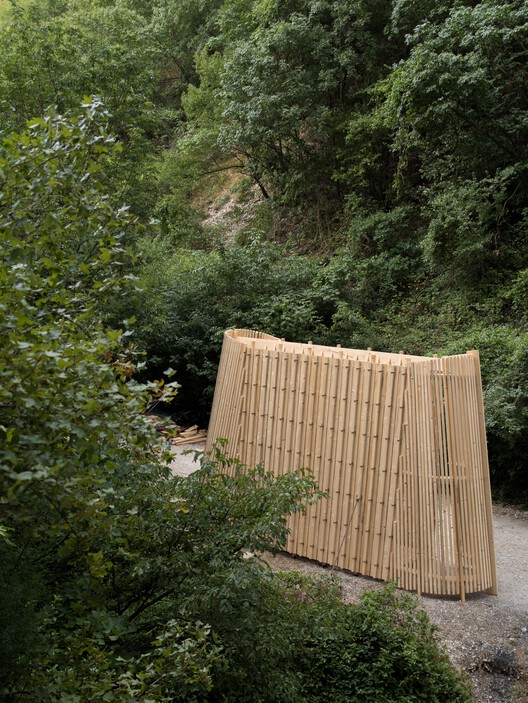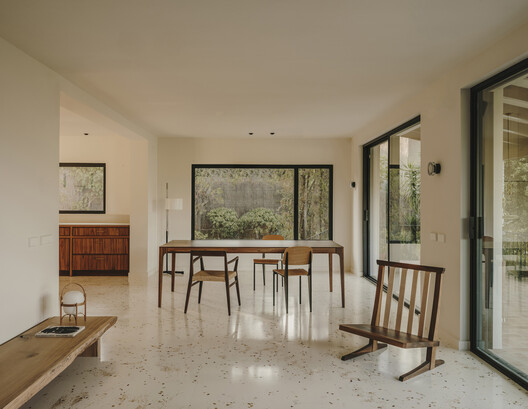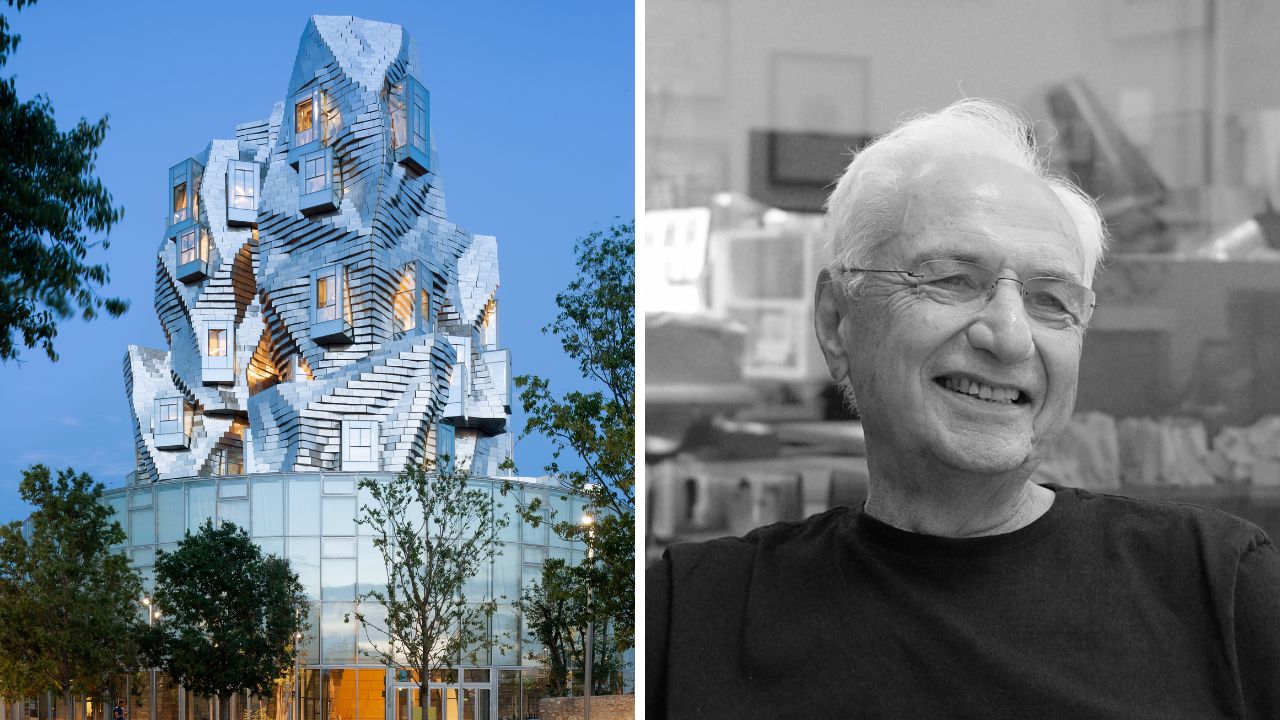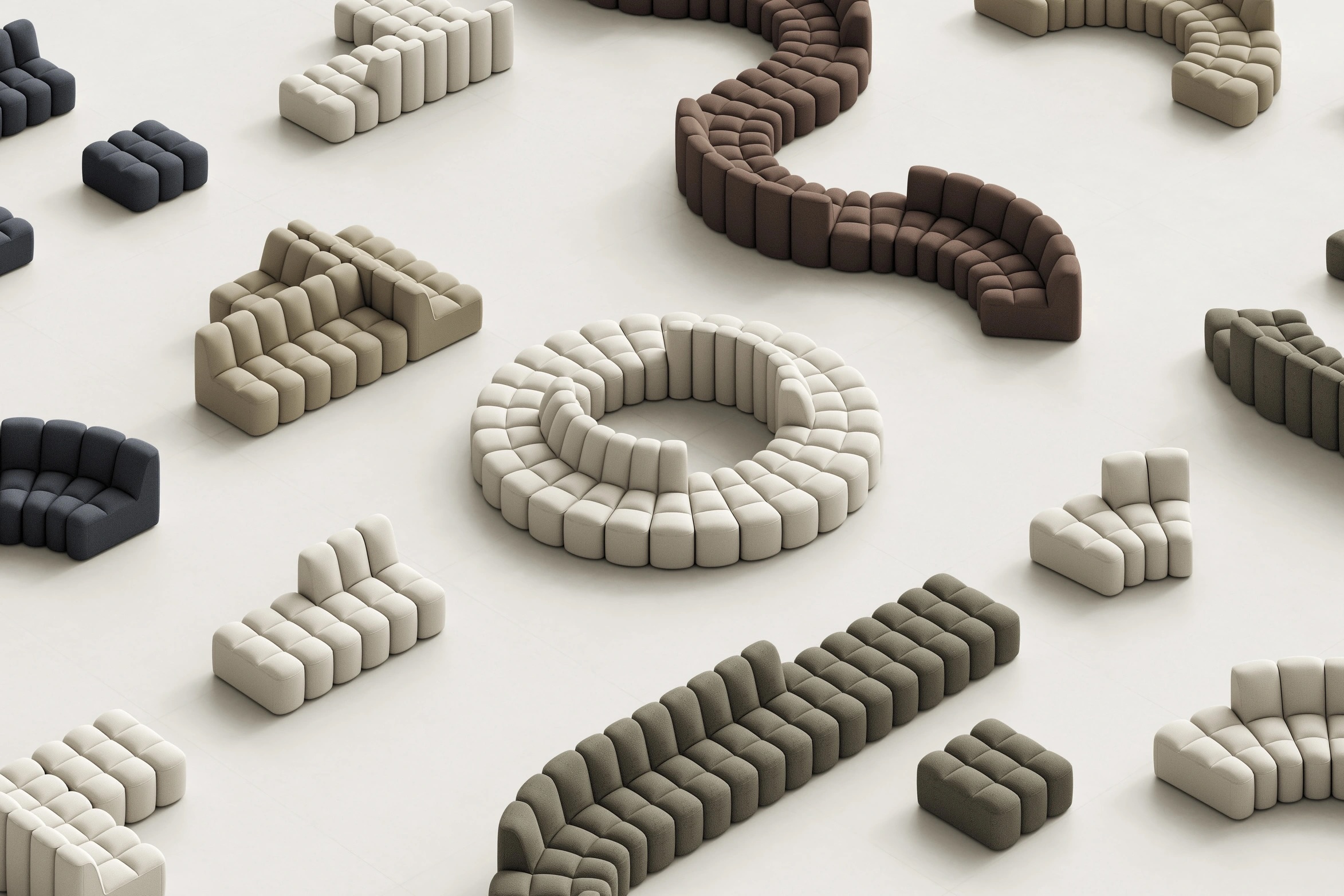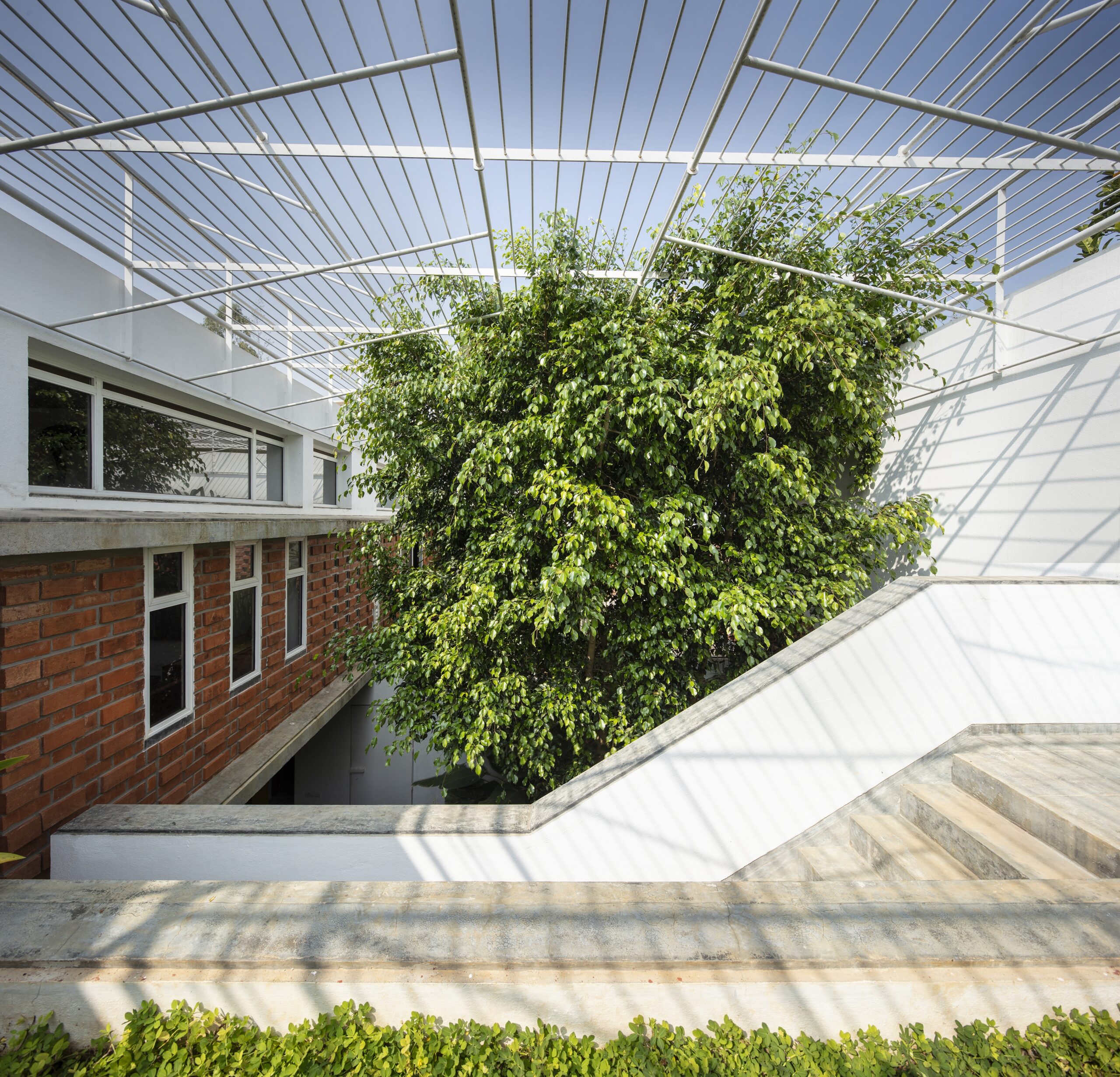Team BLDG wraps Chinese art museum in colour-shifting "woven skin"


Woven lattices made of red and white metal tubes wrap around The Quartet – Songzhuang Z Museum, a textile gallery designed by Chinese architectural studio Team BLDG in Zhejiang province.
The new museum has been constructed in a repurposed house in the remote mountain village of Songzhuang and is the first contemporary museum in rural China dedicated to weaving.
In contrast to Songzhuan's traditional rammed-earth houses, the site's existing building was made of "dense" concrete and brick, yet the client encouraged Team BLDG to accentuate rather than conceal its incongruous look.

The Shanghai-based studio decided to take a "deconstructive approach" to the design by surrounding the building with a series of metal grilles made of square metal tubes interwoven like a piece of fabric.
Drawing on the design of the village houses, the museum has been vertically divided into four staggered volumes, creating a "quartet" of forms with courtyards in between.
These four volumes were then interconnected with rooftop terraces of different heights and semi-transparent shading canopies.

"To visually lighten the mass of the original building, we took inspiration from traditional textile weaving," said Xiao Lei, Team BLDG's lead architect for the project.
"Aluminium square tubes measuring 20 millimetres by 40 millimetres were painted red on three sides and white on one, then arranged into a fine lattice that wraps the entire facade," Lei added.

The design team spaced out the gaps between the aluminium poles to avoid the grilles appearing too rational, while structural elements fixed to the facade were designed to act like the shuttles of a loom.
"Particularly on the terrace levels, the lattice introduces multidimensional interweaving, further amplifying the sense of woven skin", added Lei.
The woven nature of this permeable facade makes the building appear to change colour depending on the time of day, looking pink on bright afternoons, and white when it is raining or snowing.
"Thanks to the red-and-white orientation of the aluminium slats, the building takes on subtle and ever-shifting hues throughout the day," Lei said.
Visitors to the museum start their journey in the rammed-earth house next door, which was designed as a "quiet, dimly lit" entrance hall that mainly retains its traditional design.

The contrast between this darker zone and the main contemporary exhibition space has been designed to create a "sensory transition" for visitors as they move through the museum, which is centred around a vertical atrium with a skylight at the top.
This becomes a "light well" spanning all three levels of the main structure, bringing in light and serving to link up the different exhibition spaces arranged around the central space.

The windows of Songzhuang Z Museum were reconfigured from the original house and have been designed to frame certain views relevant to the museum's artworks "subtly bridging the museum interior with the rural context".
Meanwhile, visitors can enjoy panoramic views of Songzhuang village from the museum's rooftop terrace.

Team BLDG also designed a custom furniture series for the museum's café and shop, inspired by the forms of traditional looms.
Using square steel tubes as frames, each piece is wrapped and tensioned with 20mm-wide custom red woven straps which correspond to the facade's lattice system.
Other museums featured on Dezeen include a new contemporary art museum designed by British studio David Chipperfield Architects in Slovenia and Australian practice SMAR Architecture Studio's Science Island Museum in Lithuania's second largest city.
The photography is by Jonathan Leijonhufvud.
The post Team BLDG wraps Chinese art museum in colour-shifting "woven skin" appeared first on Dezeen.








_003.JPG)



